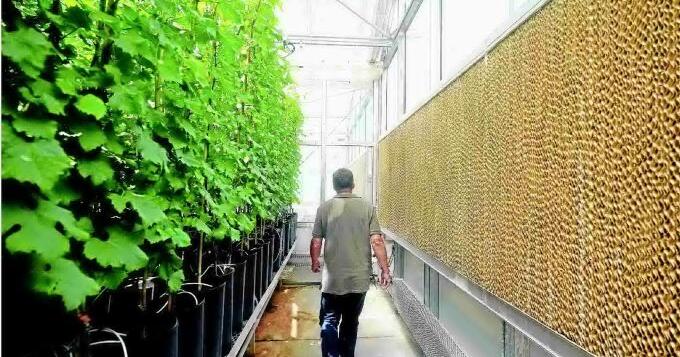Shamim Ahamed and Purvi Tiwari, from different parts of the world, were inspired to study the heat inside greenhouses after experiencing uncomfortable conditions during their separate Ph.D. research.
Tiwari, a researcher at Indira Gandhi Agricultural University in India, discovered the heat-amplifying effect of greenhouses after experiencing symptoms like leg cramps, nausea, and dizziness, similar to those reported by the farmers she studied.
In India, where summer temperatures can reach 120 degrees Fahrenheit, greenhouse workers feel suffocated inside. Tiwari mentioned that greenhouses have become a popular trend due to shrinking land availability in the past five years.
“Workplaces should prioritize human safety,” she stated.
People are also reading…
Although the number of greenhouse and nursery workers in the U.S. has increased, there are currently no federal heat regulations in place.
Research on the experiences of workers in hot and humid environments is limited, but academics like Tiwari and Ahamed are working to fill these knowledge gaps.
Bharat Jayram Venkat, an associate professor at UCLA’s Heat Lab, emphasized the need to consider human health in addition to maximizing plant growth in greenhouses.
As indoor, climate-controlled growing environments become more popular, more research is expected to emerge to address the impact of extreme temperatures. California’s recent indoor heat regulations and the rise in greenhouse workers will also contribute to increased interest in studying this topic.
Research has shown that productivity decreases as temperatures rise, leading to economic implications such as fewer crops harvested and a need for more workers. To work safely in hot environments, workers must lower their heart rate and output.
Signs of heat stress include heavy sweating, cramps, and fast heart rate. Exposure to extreme temperatures can increase the risk of injuries and heat-related illnesses.
Ahamed, now an assistant professor at UC Davis, studied the risks of heat exposure in high-tech greenhouses and compared the effects on workers when using shade materials to cool temperatures.
Researchers have faced challenges in sourcing proper sample sizes for studying greenhouse workers in the U.S.
There is a need for building codes and safety procedures based on UV, heat, and humidity exposure to protect workers in indoor agricultural environments.





